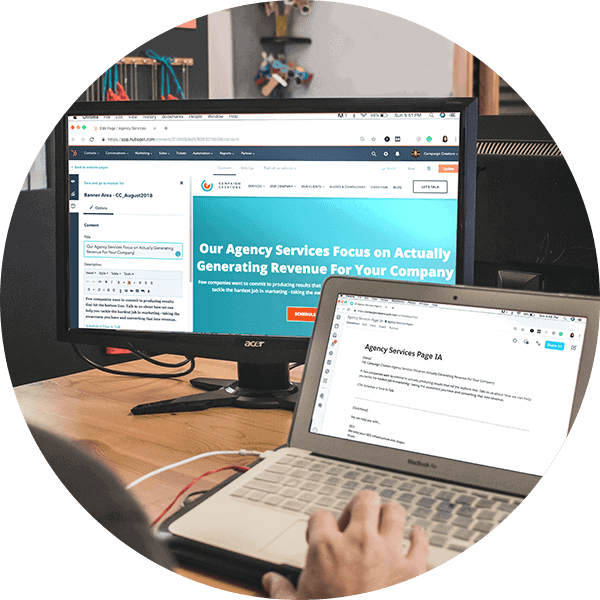
6 Technical SEO Factors You Can’t Afford to Get Wrong
December 5, 2018
Digital Marketing Strategies for Trade Shows and Events
July 8, 2019Waypost Marketing exists to make our clients successful. We don’t do fancy design award shows. We don’t care about our reputation among other marketing agencies. If we’re not helping your business make more money, that’s the definition of failure in our book.
Calculating ROI for marketing activities is a critical piece of all of our marketing strategies because we want to repeat our successes and grow from our failures. So, let’s look at exactly how we track that ROI and hold ourselves accountable for actual growth.
Specifically, we’ll look at 3 ways that we prefer to calculate ROI:
And we’ll also discuss the importance of these factors in your calculations:
How you calculate ROI will depend on your relationship with your marketing agency. If the agency handles all of your marketing exclusively, then a simple ROI calculation is good enough (provided you already understand your businesses average organic growth). Otherwise, you would be better served by tracking campaign attributable or lead generation ROI.
Whatever your situation, one red flag to watch out for is over-dependence on soft metrics in the absence of demonstrated ROI. Soft metrics are those factors we either can’t easily measure (i.e brand awareness) or can’t tie directly to sales (i.e. social media engagement). Waypost will track and report on soft metrics as an indicator that a larger campaign is gaining traction — especially when we expect the impact on revenue to take longer than a few months — but the goal is always a measurable impact on revenue.
Simple ROI
Calculating Simple ROI is ideal for businesses who work exclusively with a single marketing agency. Simple ROI will never be as accurate as the other calculations, but it can be an accurate indicator of trajectory or trend, and it doesn’t require additional metrics or years of past data to calculate. To put it simply:
(Sales Growth – Marketing Expense) / Marketing Expenses = Simple ROI
So, as an example: Client A spends $5k/month with their agency. Their sales growth is $25k/month. Client A has a Simple ROI of 400% ($20k over $5k). As a ratio that’s 5:1. You may also hear us call this a $4 ROI.
Campaign Attributable ROI
Campaign Attributable ROI takes our Simple ROI calculation and includes more specific metrics in order to strip out the ROI you’re already getting from other activities. In order to perform this calculation, we need to understand your business’s established growth trends. Typically we would want 12 months of historical data in order to safely assume a trend. To calculate Campaign Attributable ROI:
(Sales Growth – Average Established Sales Growth – Campaign Expense) / Campaign Expense = Campaign Attributable ROI
In this example, Client B wants to partner with an agency for all of their digital marketing, but they already have an established growth trend via referrals, trade shows, and trade publications. Instead of calculating Simple ROI, they need to understand the benchmark ROI from those other activities and subtract it from current sales growth.
Client B is already seeing average sales growth of $25k/month before they start digital marketing (at the same $5k/month). After 6 months with their new agency, that growth has doubled to $50k/month. The agency only deserves credit for the increase in growth — not all growth. In this case we have the same result — 400% ROI.
Campaign Attributable ROI figures are invaluable in an agency partnership. Once you start dividing your total ROI among different agencies and teams, everyone will want to fight over the largest piece of the pie at the expense of those other contributors.
Lead Generation ROI
When we calculate ROI for our clients, we focus most of our attention on Lead Generation ROI for several reasons. Among them, we want to:
- Demonstrate the real value of individual marketing strategies.
- Provide immediate benchmarks for setting reasonable goals.
- Justify improvements at any point of the marketing/sales cycle.
- Justify budgets for future strategies.
To calculate Lead Generation ROI, we work backwards from the Customer Lifetime Value (CLV) all the way to the initial engagement to determine the value of a lead at any stage of the sales cycle. If your CLV is $100k, here’s how we might break it down:
- Assuming a 20% close rate for Sales Qualified Leads (SQLs), an SQL is worth $20k.
- Assuming a Marketing Qualified Lead (MQL) to SQL conversion rate of 30%, an MQL is worth $6k.
- Assuming a 7% Contact to MQL conversion rate, a contact is worth $420.
- Assuming a 4% Visitor to Contact conversion rate, a visitor is worth $16.80.
Calculating Lead Generation ROI is a regular exercise. We never want to assume the same numbers for months at a time. We also have to avoid the temptation to cherry pick from these numbers for a specific campaign calculation:
If a contact is worth $420, I can’t just run a generic social media campaign that collects 500 new contacts under less-than-true pretences and claim a $21k ROI. The other conversion rates have to hold up as well.
In order for Lead Generation ROI calculations to hold up to scrutiny, we have maintain awareness at every stage of the sales cycle.
Commonly Misunderstood ROI Factors
How do you set benchmarks for ROI?
Setting benchmarks for your own internal goals can be difficult if you’ve historically never tracked these figures. While there are “industry benchmarks” available through a little research, it can be counterproductive to focus too much on what other people are accomplishing. During our discovery phase we may start with one of these industry benchmarks, but sometimes the most helpful approach when you are getting started is to ask yourself what would make you happy? Is it 200% or 500%?
It may seem arbitrary, but giving your team a goal will help them focus on concrete numbers, which is always preferred to abstract success/failure measurements.
If you do take this approach, allow some room for reassessment after a couple of quarters. It may be that you’ve inadvertently set the bar unreasonably high (or unreasonably low). Regardless, once you have a quarter of data, the next quarter’s goal should be to improve.
Why should you consider CLV in ROI formulas?
There are three good reasons to shift your thinking toward Customer Lifetime Value:
- Your business is built on long-term relationships, not short-term deals. It can be tempting to forget this if your sales and marketing teams are only tracking monthly revenue from new business.
- Customer retention is a valuable part of sales and marketing. If we are increasing your CLV through customer happiness initiatives, then we are increasing your marketing and sales ROI numbers.
- If you aren’t calculating CLV, your numbers are wrong. Give credit where it’s due. If marketing delivers a new customer to your business, they deserve credit for all the revenue that customer generates — not just the first deal.
How do you calculate ROI if revenue is declining?
In some cases, a business might come to us with declining sales. In these cases we have to factor those negative trends in our ROI calculations. We would consider any slowdown or reverse of a negative trend as a success, so, for example, if you are experiencing a decline of $10k quarter over quarter and we can shrink that trend to $2k quarter over quarter, we would report a positive ROI of $8k.
What does it mean to compound ROI?
Waypost is an agency that takes a holistic approach to marketing and sales. We want to increase your ROI at every step. We are very careful to avoid focusing too much on single metrics to gauge our success. Instead, we want to defend and improve every part of your sales funnel. In this way we can compound your ROI.
As a negative example, some agencies will focus almost exclusively on organic search traffic. While increasing organic search traffic is a good way to increase your ROI, you also need to be defending and improving your conversion and close rates. An agency that neglects your sales team’s performance might report stellar numbers in the face of flat revenue growth.
Turning this around, an agency that enables your sales team to double their close rate only needs to keep organic search traffic steady in order to significantly increase your revenue. If we can improve a number of ROI factors even marginally, the compound effect on revenue growth can be overwhelmingly positive.
Defending your Budget
Whether you’re a marketing manager or a CEO, everyone has to defend their budget to someone. When that conversation happens, solid proof of ROI is the only dependable argument for maintaining or increasing a marketing budget.
As an agency, we have a vested interested in seeing your marketing budget maintained and increased, but only so far as we are actually helping your company to grow and be successful. Some quarters we fail. Most we succeed. While we would never want to be judged on a single poor performance, we’re willing to concede that we are only as good as the results we deliver. In every case, whatever decisions our clients make, questions about your ROI should never be left to guesswork.









